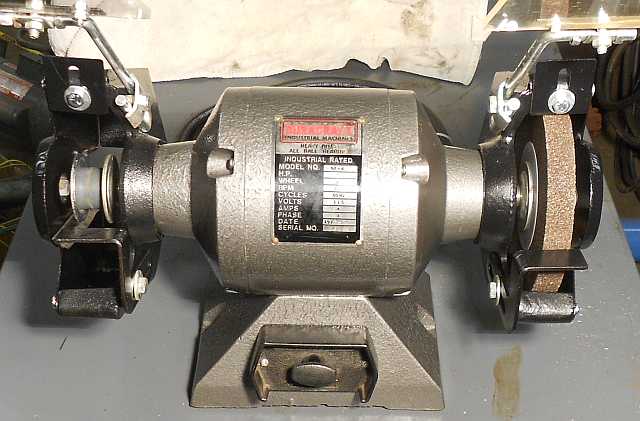My father-in-law asked me to rebuild an old bench grinder that came from one of his buddies. It was intended for a Christmas gift for his son. As the grinder came to me its finish was corroded, a lot of rust showed, and one of the eye shields was partly broken. Worse, when I turned it on, it vibrated horribly. It started walking around the bench, in fact.
It was made by Duracraft in Taiwan sometime in the 1970s. All of it but the end bells were made from cast iron and the bearings were fine, however, and it was complete. I agreed to have a go at it. In the end, I was able to make a decent machine from it.
These show how it looked as received:
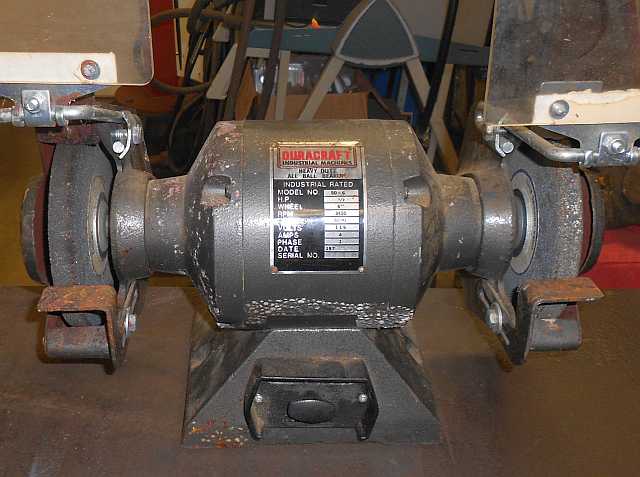
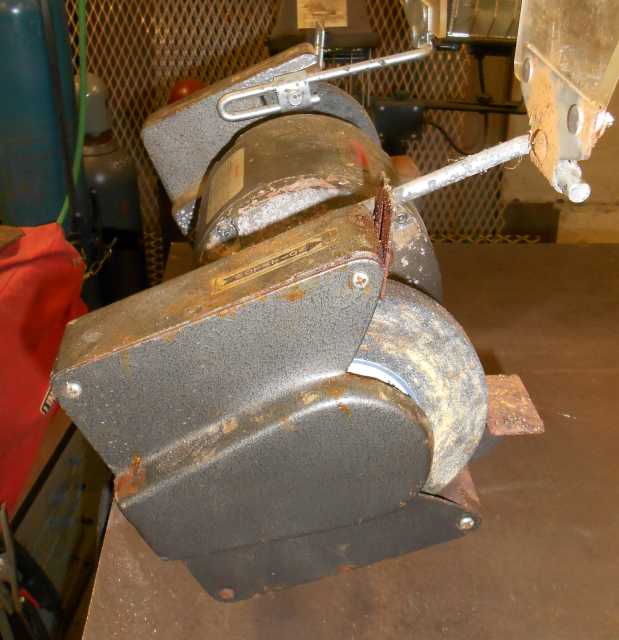
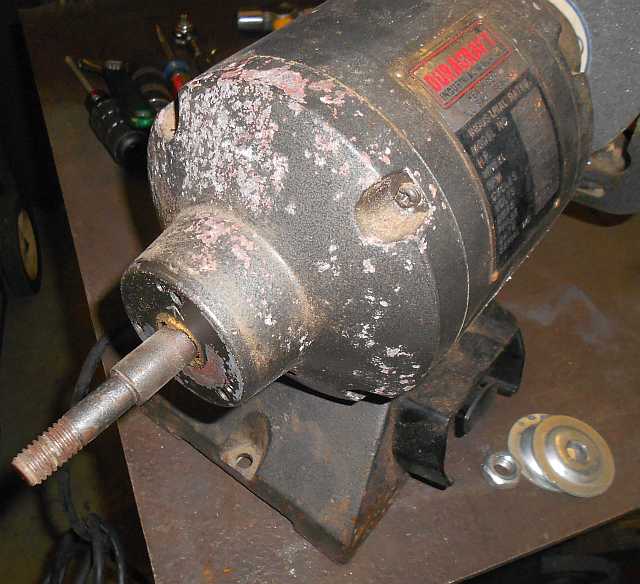

The cosmetic upgrades weren't anything special. I took things apart, cleaned them up and painted them, and put them back together. I used electrolytic derusting on the wheel guards and tool rests. I did remove the power cord and switch before sanding and masking the grinder body:
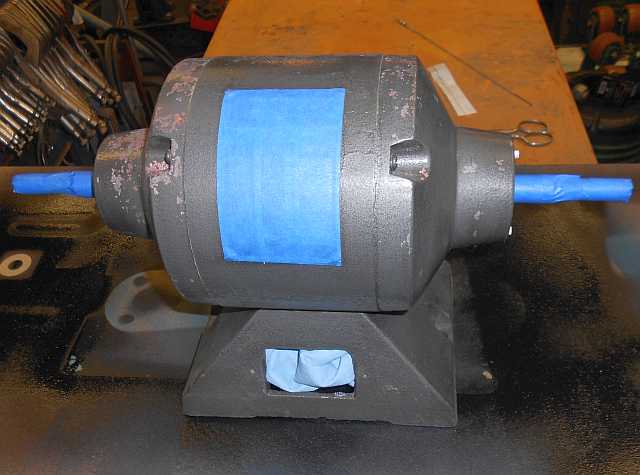
I painted the end parts gloss black and painted the grinder body with a gray Rustoleum hammered finish paint. The hammered finish covered the imperfections in the sanded paint:
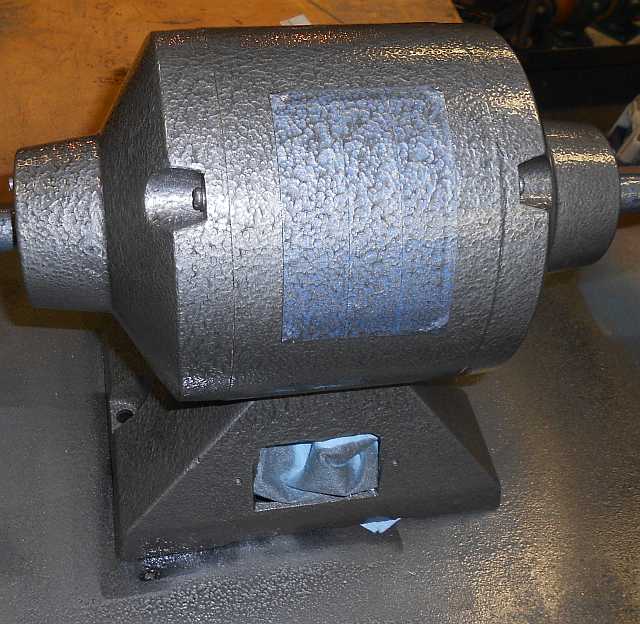
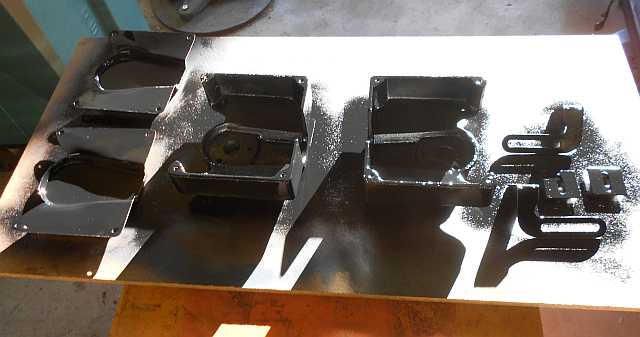
With that complete, I moved to trying to get rid of the vibration. I researched the Web and found several good articles. Here are a few links:
The above suggest to me that the nuts and wheel flanges were critical. I made an attempt to true mine. I put a sheet of wet/dry on a ground flat surface and lapped my flanges flat until there was a solid planar ring to bear against the grinding wheel. Then we turned the flanges over and clamped them to a mill table and simply milled off the back sides:
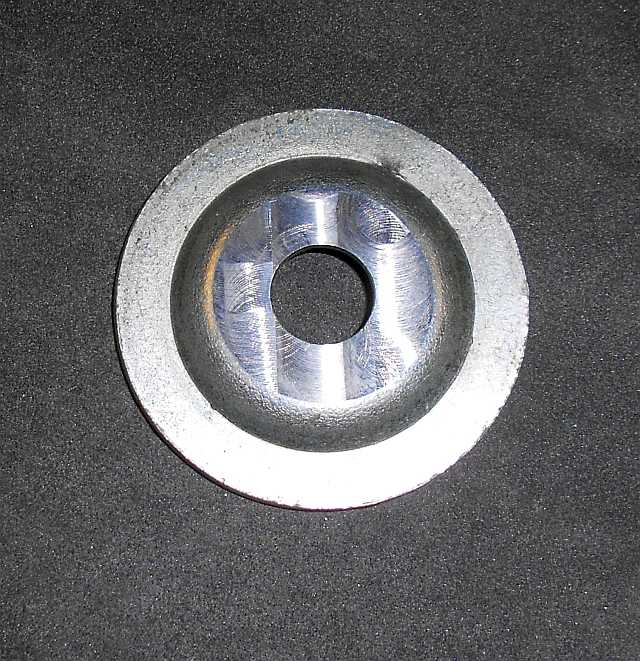
I also lapped the nuts and checked them. Mine seemed fine, so I stopped there. The wheels that came on this grinder were made by "China Grinding Wheel" as you could see in the photo above. They were badly glazed. I used a star wheel to remove the glazing, then a diamond dresser to true the wheels. Sadly, even with the wheels running true, there was still way too much vibration. I bit the bullet and bought a brand new Norton 6x1" bench grinding wheel. With the trued-up flanges, the Norton wheel runs quite smoothly even before truing.
My conclusion is that the primary source of vibration is the mounted wheel. The flanges and nuts play a minor part compared to the wheel. If I'd had more time I might have made a couple of pairs of balancing washers. I'll leave that for future investigation.
I fixed the broken eye shield by removing the aluminum rivets. To do this, I used an inexpensive bench block with holes in it. I set the flat part of the rivet over a hole and took a center punch and punched the peened-over end of the rivet until it deformed enough to get the flat part away from the bracket. Then I caught the bracket in the bench vise and simply hacksawed off the flat end of the rivet. Then they pushed right out. That didn't do the broken acrylic much good but what the heck, it was broken anyway. After I cleaned up the eye shield bracket a bit I went to Tap Plastics and had them cut me a new piece of 3/16" plexiglass to size and radius the corners. Then I drilled two 3/16" holes in the acrylic to match the bracket holes and just bolted it on using 10-32 fasteners.
I also replaced the power cord with a piece of 14-SO3 and a proper industrial quality plug. This cord is both tougher and more flexible than the PVC-coated cord the grinder came with.
I have to say this was a fun little project, and I learned a thing or two as well. I'm sure my brother-in-law will appreciate getting this for a Christmas present. I'm also happy to have given an old inexpensive grinder a whole new start in life. I bet it will now last another 40 years.
Thanks for reading! Here's how it turned out:
